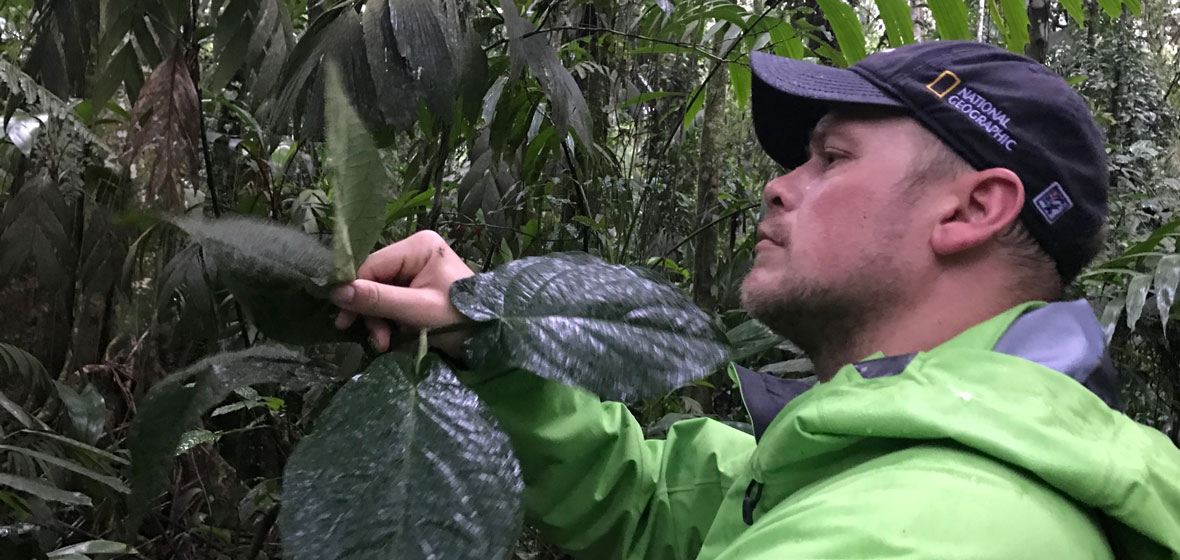Is there a cure for cancer in the Great Basin? Are there undiscovered compounds that are key to the biodiversity of the tropics? The Chemical Ecology group is poised to answer these and other questions with the opening of the Hitchcock Center for Chemical Ecology. The Center will formalize and enhance the highly successful interdisciplinary and international collaborations in the fields of chemical ecology and natural products chemistry. The Center will support collaborations between the Departments of Chemistry, Biology, Mathematics and Biochemistry in the College of Science and the Department of Natural Resources and Environmental Science in the College of Agriculture, Biotechnology and Natural Resources and the interdisciplinary Ecology, Evolution and Conservation Biology graduate program. The Center also collaborates with international organizations and researchers in Brazil, Ecuador, Peru, Argentina, Colombia, Costa Rica, and Mexico.
The formalization of the center was largely funded by a generous donation from biochemist and developer of life-saving anti-viral drugs, Mick Hitchcock.
"I support the Chemical Ecology program because it has multiple benefits," Hitchcock said. "It is a great interdisciplinary area of discovery for new molecules with biological activity, that potentially could lead to drugs or pesticides/herbicides. It is an attractive field for new scientists to develop collaborative research and discovery programs. It provides a valuable platform for students to understand the chemical nature of biological molecules, and to see how species interact."
The Center will bring together over 20 faculty across disciplines to utilize cutting-edge tools to examine the origins of natural products and their role in ecology, evolution, medicine, and agriculture.
"In science, interaction across fields is more difficult than you would think," Associate Professor Christopher Jeffrey said. "The questions in science right now are so big that they require the integrated efforts and expertise of disciplines. I think the subject of Chemical Ecology drives the training, research innovation and collaborations that allow us to address these large questions."
Leaders in their field
The focus of the Chemical Ecology Center is on the chemistry behind species interactions. Research projects include the study of plant defensive chemistry and how it impacts insect diversity demonstrating that molecular level features can have a huge impact on more than just the plant itself (read the "Phytochemical diversity drives plant-insect community diversity" on pnas.org). The group also recently published a thorough article in Nature Reviews Chemistry that provides a prospectus of research at the interface between chemistry, ecology and evolutionary biology that now serves as a kind of handbook for modern chemical ecology research and is an important recent product of their collaboration (read "Modern approaches to study plant-insect interactions in chemical ecology" on nature.com).
The publications produced by the chemical ecology collaboration have been published in the world's most prestigious science journals including Science, Proceedings of the National Academy of Sciences, Ecology, and Evolution. Since 2011, the Chemical Ecology group has received over $20 million in extramural funding and $10 million in funding for the University. The group has engaged with over 600 citizen science volunteers and 20 collaborating scientists from outside institutions.
"The Hitchcock Center for Chemical Ecology is a paragon for collaborative research," Chemistry Department Chair Ben King said. "The intellectual, scientific, educational, and practical outcomes from this Center testify to the power of an intellectually diverse collaboration and the importance of recognizing the scientists involved. I am grateful for Dr. Hitchcock's generous support that enables this center."
"For too long, scientists have been siloed in their own highly-focused disciplines," Executive Director of Ethnomedicine at Brain Chemistry Labs and recent Discover Science Lecture Series presenter, Paul Cox said. "While much lip service has been given to the importance of interdisciplinary research, few academics have ventured out of their own disciplines to help create a broader scientific synthesis. The Chemical Ecology group have achieved not only deep scientific results in their collaborative research but have also inspired a group of students who themselves will become world leaders in the future."











